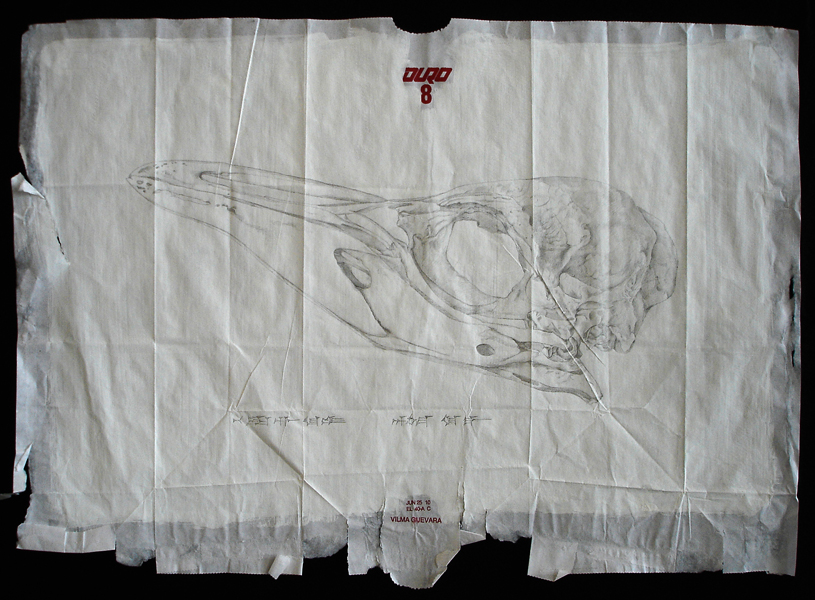
Ereshkigal, VII.203
Silverpoint on prepared ground on found paper
20 7/8" x 14 5/8"
Translation of the cuneiform:"[There sat the] queen of the Netherworld, Ereškigal."
The image is of an Adelie penguin skull. Adelie penguins live in Antarctica, at the bottom of the earth, in darkness for six months of the year. Shortly after finishing this series I worked in Antarctica during the dark season for six months. Like Enkidu, I visited a different reality with little contact to the world above.
Not until after I finished this drawing did I realize that beings in the ancient Babylonian underworld are described as having feathers like birds.
ABOUT THE GILGAMESH SERIES
This series of 10 drawings is based on the ancient Mesopotamian story of Gilgamesh. "Gilgamesh" appears on cuneiform tablets (an ancient form of writing on clay) dating to about 2000 B.C.E. It relates an epic journey made by the King of Uruk, Gilgamesh, and his friend, Enkidu. The story is also about what is and is not eternal and significant. These 10 drawings, like the story, are about permanence versus transience, and about trying to determine what is important and what is inconsequential.
The drawing substrate - paper bags - comment on disposability and value. Like excavated archaeological material (most of which is ancient refuse), when the paper bags are put into a different context, their significance changes. Also like excavated archaeological material, the paper bags will deteriorate over time. In this way, the drawings are like the ancient tablets on which the story of Gilgamesh was written.
All of the drawings in this series are made by drawing with sharpened silver or copper wire. The lines are created by transfered metal particles, which means that the drawings themselves will tarnish with time, like archaeological objects.



